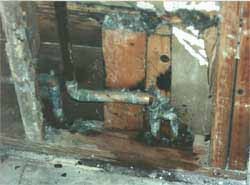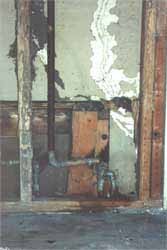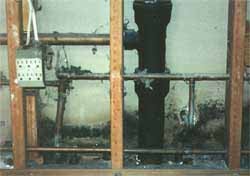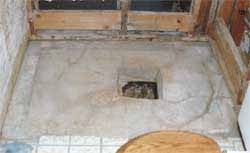- Please select a category below:
- Home
- Contact Us
- New Products / Service of the Week
- General Pest Treatment
- Trapping Services
- Mice & Rats
- Squirrels
- Raccoons
- Rodent Treatment
- Rodent Control & Management
- Honey Bees
- Carpenter Bees
- Cicada Killers
- Paper Wasps in Attic
- Yellow Jackets / Hornets
- Cockroaches
- Cockroach Clean-Out!
- Ants
- Termites
- Termite Control
- Fleas
- Texas Rat Snake
- Snake Control
- Inspection Reports
- Links
- Photos - Coming Soon!
Termites
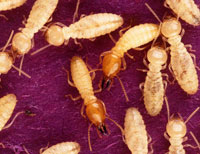
If you think you have subterranean termites, then you need to be positively certain. Subterranean termite swarmers appear in the United States starting in February (south Florida) and swarm until early June for the northern areas of the United States. In most instances of swarming, the individual termite colony only swarms 1 or 2 times. It is not a constant swarming cycle, and unless you are lucky enough to witness the swarm or find dead swarmers or wings, you may miss it. You may normally find workers, soldiers and/or swarmers, but you will not find queens or kings because they are hidden deep inside their colony. If you do not see signs of swarming, then there are other signs that you can look for.
In coastal areas of the US, drywood termites are common. Drywood termite swarmers differ from subterranean termites in color. Drywood termite swarmers are red with blackish wings - and can be confused with Florida carpenter ants.
The most obvious sign of subterranean termite infestation is mud tunneling. Subterranean termites build mud shelter tubes in which they travel. These mud shelter tubes are connected with the termite colony, and are constructed of dirt and an acid substance that the worker termites secrete. The mud shelter tube helps to protect the worker termites from predators such as ants, and also provides them with humidity. Most importantly, mud shelter tubes give the blind worker and soldier termites a highway in which to travel to and from their food sources. Mud shelter tubes are very hard packed, and usually as they get older, they get harder and larger. Some mud shelter tubes are as small as a pen; others can be several inches wide.
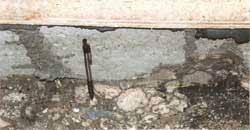
Mud shelter tubes are usually seen on the outer sides of foundation walls as seen in the photo above. They can also be seen emerging from sheetrock in ceilings, and on sheetrock walls as shown in the pictures below.
